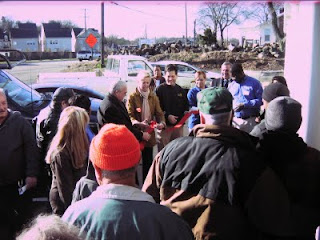While suffering through another awful Skins game, I came across another ominous article in tomorrow's Washington Post regarding borrowing from future generations and lack of investment in our people. The article reports that lenders are cutting off access to students loans and credit cards in the face of skyrocketing tuition from state budget cuts. Home equity lines also no longer provide families with the reserve they need to finance education.
Here are some stats:
- Since 1980, the cost of college in the United States has risen by 121% while median household income has risen by 18%.
- A decade ago, tuition at UVA was $4,000 in-state and $17,000 out-of-state. Today it is $10,000 and $32,000.
- The Governor cut higher education by 15% last year - $19,000,000 of UVA's $140,000,000 budget.
- The University of California System is increasing tuition by 32% this year.
- Stafford Loans are limited to $5,000 per year.
- In 2008, the average 529 Plan lost 20% of its value.
Here are some stats from persona experience:
- I went to JMU from 1989-1993. My recollection is that tuition was about $3,200 year. Today, it costs $8,244.
- I went to UVA School of Law from 1993-1996. When I started, it cost $8,500 per year and was 60% in-state students. The General Assembly pulled all state funding out of the School of Law during the 1990-1992 recession and the school entered into a privization agreement with the state while I was there. Today, UVA Law costs $38,800 and is 40% in-state students.
"If you are the average family and you've got two car payments and a mortgage, sadly, you are probably living paycheck to paycheck these days," said Gary Carpenter, executive director of the National College Advocacy Group. "And you've got a big problem -- how are you going to afford a state institution at $20,000 a year, not to mention a private one for than $40,000?"Of course, this article does not point out that this economic crisis has caused public secondary school enrollment to skyrocket as people can no longer afford private schools. The same wave must surely be en route to our more affordable public universities and community colleges.
Some educators worry that college programs will sacrifice quality to contain costs or become limited to those who can afford it.
"The big macro question is: Will we have to sacrifice the quality of education, or the access, based on talent rather than the ability to pay?" said Marx, the Amherst president. "Either of those make America less competitive for the next generation."
It is in the face of this that the Governor has proposed cutting higher education by 26% over the next two years. No question, Governor Kaine as forced to make the hardest cutting decisions of any Governor since The Depression. However, Governor-Elect McDonnell is sure to propose larger cuts or increased privitization due to his no-tax pledge.
I mentioned my concerns about higher education cuts in a post last week and described higher education cuts as an attack on the Middle Class. It is not looking good. If you are lucky enough to have some cash and some young children, go buy a Virginia Prepaid Education Plan now.




 Our cars in the driveway......
Our cars in the driveway......























